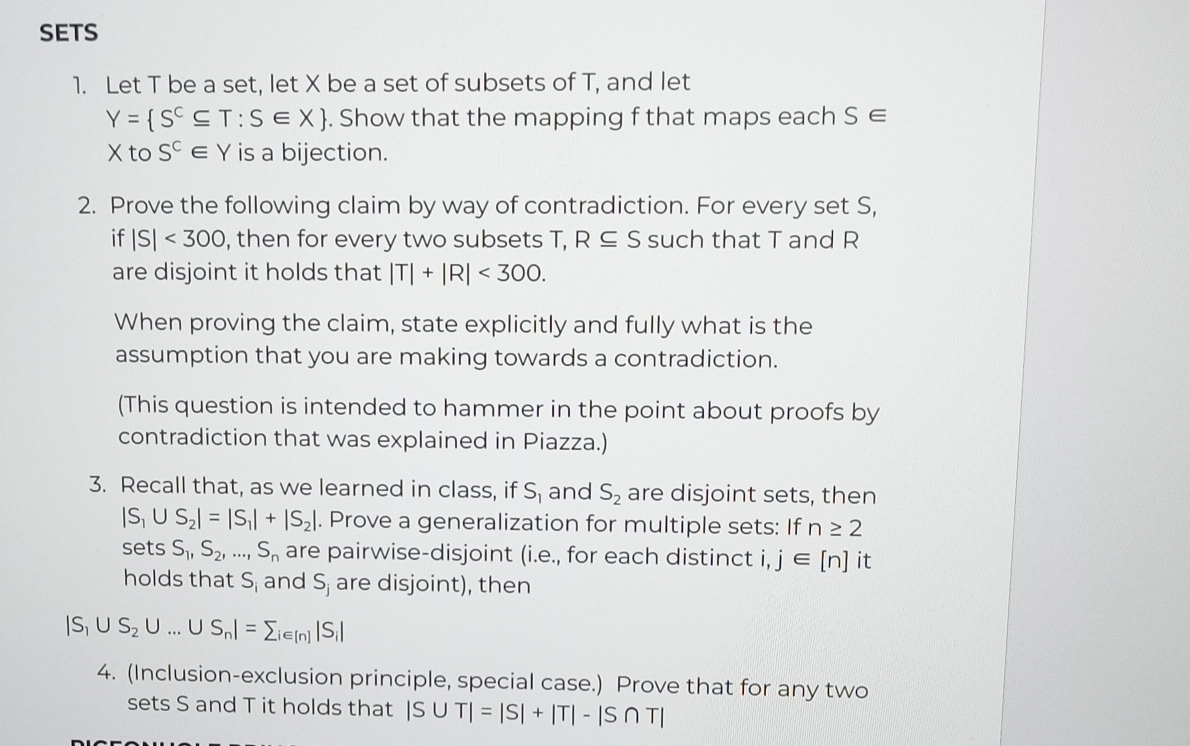Question
SETS Let T be a set, let x be a set of subsets of T , and let Y={S^(C)subeT:Sinx} . Show that the mapping f
SETS\ Let
Tbe a set, let
xbe a set of subsets of
T, and let
Y={S^(C)subeT:Sinx}. Show that the mapping
fthat maps each
Sin
xto
S^(C)inYis a bijection.\ Prove the following claim by way of contradiction. For every set
S, if
|S|, then for every two subsets
T,RsubeS such that
T and
R are disjoint it holds that
|T|+|R|.\ When proving the claim, state explicitly and fully what is the assumption that you are making towards a contradiction.\ (This question is intended to hammer in the point about proofs by contradiction that was explained in Piazza.)\ Recall that, as we learned in class, if
S_(1) and
S_(2) are disjoint sets, then
|S_(1)\\\\cup S_(2)|=|S_(1)|+|S_(2)|. Prove a generalization for multiple sets: If
n>=2 sets
S_(1),S_(2),dots,S_(n) are pairwise-disjoint (i.e., for each distinct
i,jin[n] it holds that
S_(i) and
S_(j) are disjoint), then\
|S_(1)\\\\cup S_(2)\\\\cup dots\\\\cup S_(n)|=\\\\sum_(iin[n]) |S_(i)|\ (Inclusion-exclusion principle, special case.) Prove that for any two sets
S and
T it holds that
|S\\\\cup T|=|S|+|T|-|S\\\\cap T| 
Step by Step Solution
There are 3 Steps involved in it
Step: 1

Get Instant Access to Expert-Tailored Solutions
See step-by-step solutions with expert insights and AI powered tools for academic success
Step: 2

Step: 3

Ace Your Homework with AI
Get the answers you need in no time with our AI-driven, step-by-step assistance
Get Started


